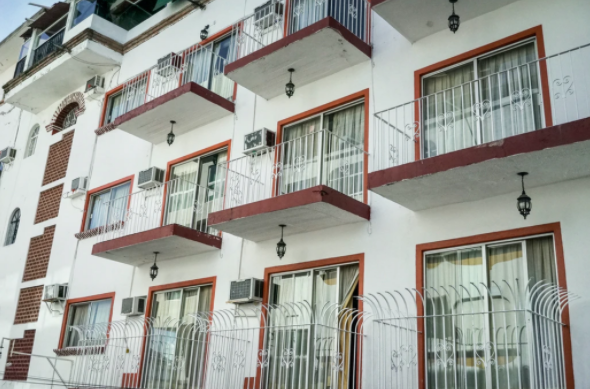Purchasing real estate and transforming it into rental properties has always been a bankable investment. In fact, this lucrative market continually sees a sizable return on investment year after year, regardless of how inflation threatens other industries to a standstill.
Last year alone, the U.S. housing market rose to 2.5%, an equivalent of around 5.34 million units sold. Coupled with how appreciation has been close to 6.74% annually for the past half a century (and counting), the long-term benefits of real estate investment are definitely rewarding.
Be that as it may, the hurdle emerges once multiple rental properties enter the picture. Banks and lenders are reluctant to offer loans for this real estate leasing enterprise. A large percentage of them have completely closed doors to it.
As you look into how to finance multiple rental properties, let’s talk about why banks are reluctant to support such ventures, and what you can do to arm yourself ready as you seek financiers who can fund multiple rental loans.
Why Are Banks and Lenders Reluctant to Support Rental Properties?
The moment you get past the 4-property mark, you might discover firsthand that banks and lenders will not be keen on lending for a 5th. Even more so, a 10th. Given this prospect, how are most apartment properties financed?
You have to understand the loan process to know how to finance multiple rental properties along these lines: it isn’t technically “you” who purchases the property at the onset. The bank does that for you. Afterward, you simply repay them the full amount, staggered, over a number of decades.
These financial institutions believe that financing beyond 4 rental real estate properties is too risky of an action to take. Although these very institutions agree that loans for rental properties vary vastly from one case to another, most are on the same page when it comes to issuing multiple rental loans.
Among their justification behind this is that they’re concerned about the likelihood of rental properties going through bouts of irregular positive cash flow cycles per year. And for 5 properties and above, that gamble is multiplied by those numbers.
They are not, and will not be, in a position where they have to broaden their business perspectives and think of how you’ll optimize your advertising, contact property managers for long-term tenants, etc. These factors have nothing to do with banks.
In that sense, they aren’t going to think as you do in calculating “possibilities” regarding your future rental business. They’ll merely base their decision on the “now.”
But before you feel dejected, there are steps you can follow to land a lender. Below are tips on how to best finance multiple rental properties.
How to Finance More Than Four Real Estate Properties
Most banks are willing to finance as many as 4 real estate properties through conventional loans. This all changes when you go past 4 and decide to have them finance 5 or more. You will either be faced with much more rigid requirements for you to squeeze your way through or an upfront loan application rejection.
Still, learning how to finance more than 10 properties isn’t impossible. There’s a tried and tested checklist that you’ll find is straightforward and highly practical.
Credit Score
The first step to consider is your credit score. The benchmark for four properties is, more frequently than not, 630. Strictly, not much lower than that. This means that you should have a rating from anywhere between “Fair” to “Exceptional,” from a credit score authority.
Considering this is below the average credit score, you’ll be surprised to know that approximately 36% of Americans have a credit score close to 630, and that percentage signifies delinquency (and serious delinquency, if undealt with, in the future).
Therefore, if you scored higher than this, that’s a partial green light for banks to review your application, in relation to said number of properties.
In case you want to secure passing the credit score rubric for 5 to 10 properties, aim for 720, or a “Good” rating or better.
In addition to these prerequisites, the last 7 years of your credit history must not reveal bankruptcies or foreclosures.
Buffer
Secondly, have a 5 to 6-month vacancy buffer ready. These reserves will act as protection against a 0 revenue stream, should the property be tenant-free within that period of time. It will also be the lender’s guarantee that in the case of vacancy, you’ll be financially capable of continuing with your mortgage payments (and other related expenditures) regularly.
In addition to this, it’s a must that no late mortgage payments ensued within the last 12 months. A single late payment is enough to automatically disqualify a borrower, in spite of you being cleared of the rest of the prerequisites.
Not only that, but that buffer is also expected to include advertising costs as you scout for a replacement occupant, along with maintenance and repair expenses.
Down payment
Another requirement is that you are to offer a 30% down payment of the overall agreed-upon price for multi-family properties. Traditionally, around 20% is required for a single-family home. That said, the safer approach is to hit at least 30 to 35% if you’re working within the 5 to 10-property scope.
To give you an estimate of the metrics that correspond to your rental investment, here’s a rent cash flow calculator to help you out. Simply type in the necessary data and have them computed with a click. It’s an effortless tool that will provide you with a bird’s eye view of the purchase price, loan amount, mortgage term, interest, cash flow, and more.
Tax Returns
A show of documented tax returns reflecting the financials of the last 2 years belong to this criteria as well. This applies to all of your rental properties. Lenders need to analyze the consistency (or inconsistency) of the income stream before they can offer assistance.
Conclusion
Going through the demanding requirements of acquiring a loan for your 4th and other properties can seem daunting. As long as you conduct due diligence with your credit history and other necessary preconditions with respect to buffers and down payments, then you shouldn’t have to worry.
You’ve probably already been told (or perhaps you’ve just gone to a big bank and had your loan application rejected) that multiple property lending is a dead end. It isn’t. With this checklist and with more helpful information in regards to financing multiple rental properties through The Short Term Shop, you’ll have less hassle and more knowledge on how to get a loan and buy multiple rental properties!











